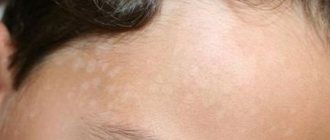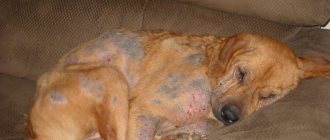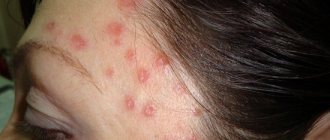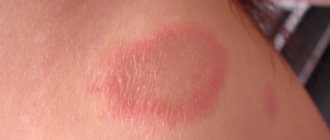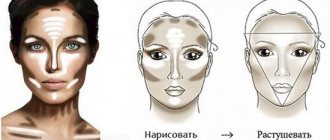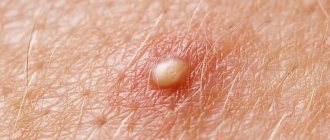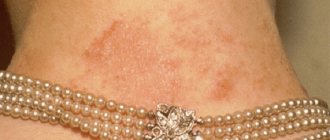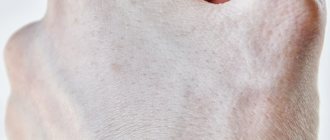Shingles is type 3 of the herpes virus. Pathology develops under certain conditions in people who have previously had chickenpox. After shingles, it is possible to develop serious complications that affect the skin, brain and spinal cord, and the functioning of a number of internal organs. To avoid serious consequences, it is important to consult a doctor at the first symptoms of the disease, and not try to fix the problem yourself.
Causes of herpes zoster and factors that increase the risk of the disease
The cause of shingles is infection with the herpes virus type III or chickenpox. Initially, herpes pathogens that enter the body cause chickenpox. Chickenpox most often affects children under 5 years of age. After some time, with a strong decrease in immunity, shingles occurs. That is, you cannot get shingles if you have not had chickenpox.
The insidiousness of the virus is that even after acute symptoms are relieved, viral particles are present in the nervous system. Therefore, a person infected with herpes remains a carrier for the rest of his life.
Viral DNA is located in nerve endings near the spinal cord. It is impossible to remove herpes without damaging the cell.
High immune defense blocks the activity and reproduction of the virus, preventing symptoms. Therefore, the incubation period for infection with herpes zoster can last from several weeks to several years.
It turns out that the disease does not come from outside, but from the person’s body itself. The main reason is a decrease in immunity as a result of such conditions:
- long-term use of medications that suppress the immune system - corticosteroids, immunosuppressants;
- physical and emotional stress;
- neoplasms;
- undergoing radiation therapy;
- hypothermia;
- HIV infection.
Shingles is highly contagious (infectious). Viral particles are contained in the contents of the vesicles, therefore, when in contact with a patient, it is easy to become infected. A person is dangerous from the moment the vesicles appear until the crust falls off.
Not all people who have had chickenpox will necessarily develop herpes zoster. As a rule, the virus recurs only with a strong decrease in immunity, which may not happen in a lifetime.
How to avoid complications?
The virus is most active in weakened organisms, so a sick person should not have contact with pregnant women, children, the elderly, or people who did not have chickenpox in childhood. The main opportunity to prevent the development of complications is to begin comprehensive treatment within the first 2–3 days, after the first symptoms of the disease appear. In addition to using prescribed antiviral and restorative medications, you must adhere to your doctor’s recommendations regarding the care of rashes and wounds on the skin. Neglect and scratching of the blisters leads to infection and complications.
What does herpes zoster look like on the body?
Shingles on the face and neck of a person first appears in the form of individual pink spots with an uneven edge, characterized by increased sensitivity. The average diameter of such rashes is from 3 to 5 cm. After a day, bubbles - vesicles - appear on the surface of the spot.
The main difference between herpes zoster and other dermatological diseases is the clear boundaries of the rash.
Most often, vesicles appear on the chest, neck or face; they typically involve one side, shoulder blade and shoulder. Localization is almost always one-sided and coincides with the course of the nerve. Skin manifestations disappear within 21-30 days, and neuralgic (soreness) can persist for up to six months.
Who is at risk?
After you have had chickenpox (usually in childhood), the virus that causes it remains in an inactive form inside the nerve cells. In most cases, the immune system is able to keep the virus inside the cells, but as people age or their immune system weakens, the varicella-zoster virus can leave the nerve cells and thereby cause shingles. If you have been vaccinated against chickenpox, you have greatly reduced your risk of getting it and of having shingles in the future.
It is worth noting that most cases of shingles occur in people over 50 years of age or who have a weak immune system. For example, it is often found in patients with cancer, HIV (human immunodeficiency virus) or AIDS (acquired immune deficiency syndrome), or as a result of taking drugs that weaken the immune system.
Who is susceptible to shingles of the eye?
Herpes zoster is very rare in children. It affects older people much more often, and men and women experience this disease equally often. As a rule, it develops in people who have previously had chickenpox.
Symptoms of herpes zoster
The clinical picture of herpes zoster is very specific:
- gradually spreading pinkish spots on the skin;
- redness and itching along the nerve;
- damage to peripheral nerve endings (trigeminal or intercostal neuralgia);
- pain at the site of bubble formation;
- after 72 hours, groups of vesicles form on the spot, the pain intensifies, and the lymph nodes near the lesion may become enlarged;
- after a week, the rashes dry out and a hard crust forms;
- the pain persists after the rash disappears.
Typical course
The standard clinical picture of herpes zoster consists of skin lesions and a neurological disorder - severe pain. The progression of the disease is accompanied by standard symptoms of a viral infection:
- increase in body temperature;
- general malaise.
About 80% of patients at the initial stage complain of severe pain, burning and itching in the area where vesicles subsequently appear. 2-3 days after the onset of initial symptoms, papules form - small compactions, slightly raised above the surface of the skin. In 24-48 hours they turn into vesicles - bubbles filled with liquid. New vesicles continue to form over the next 3–4 days. The blisters often merge to form a single, painful formation.
If new vesicles continue to appear after 7 days, this indicates a serious lack of protective forces.
The rash is usually noticeable on the body or neck. A small percentage of patients have Ramsay-Hunt syndrome (damage to the external auditory canal, accompanied by paralysis of the facial nerve) or ophthalmic form of lichen (damage to the mucous membrane of the eyes).
On days 5-6, the vesicles with liquid turn into crusts, which fall off on their own after 2-3 weeks. At the site of shingles, redness (or paleness) of the skin, as well as peeling, is observed for a long time.
Severe pain reduces a person’s motor activity. In 20% of patients, neurological manifestations persist after the crusts fall off for several months and sometimes years. Therefore, therapy for shingles is aimed at eliminating the vesicles and reducing pain.
Atypical forms
In addition to the typical one, there are atypical forms of the disease.
Abortive
This type of shingles goes away with virtually no rash. Slight redness and isolated lumps appear. The pain is not pronounced. Sometimes there may be a slight tingling or itching sensation.
Bullous
It is characterized by the fact that in addition to the basic signs of herpes zoster, drainage vesicles appear - large cavity vesicles containing liquid. Such formations are localized in areas with a “loose” subcutaneous layer (lips and genitals).
Bullae are accompanied by swelling and redness. Therefore, the bubbles themselves become less noticeable.
Hemorrhagic
Hemorrhagic herpes zoster on the arm, neck or body is diagnosed in isolated cases and differs from the typical form of the disease only in the bloody contents of the vesicles. The crusts that appear in place of the bubbles are dark brown, not yellow. Some patients complain of pain in the affected areas of the skin.
Gangrenous
Develops against the background of decreased immune defense. Characterized by a large number of blisters with bloody contents. Ulcers remain in place of the burst vesicles. They merge, forming large affected areas. The tissues die, leaving noticeable scars. Often accompanied by symptoms of intoxication.
Generalized
This form is characterized by large lesions. The rash consists of blisters with liquid contents typical of herpes against a background of redness of the skin. There may be blood present inside the vesicles. When they burst, painful erosions form, and ulcers form on the mucous membranes of the mouth and genitals. Differs in longer formation of vesicles.
In clinical generalized herpes zoster, damage to the mucous membranes of the eyes and brain is observed. In such a situation, encephalitis, serous meningitis and meningoencephalitis are diagnosed, accompanied by general intoxication.
In the generalized form, hospital treatment is required. Otherwise, death is possible.
Possible complications and consequences
Complications from herpes zoster are rare. These include:
- encephalitis that develops a few days after the onset of the rash;
- myelitis (damage to the gray and white matter of the spinal cord), which can develop approximately half a month after the rash and is expressed in limited loss of sensitivity, and sometimes in half or complete (in severe cases) transverse damage to the spinal cord;
- paralysis of the oculomotor muscles - occurs after 1.5 months, and sometimes after six months from the onset of the disease;
- unilateral, but more often bilateral, rapidly progressing necrosis of the retina, which occurs after weeks and sometimes months;
- paresis of the muscles of the limbs when the lesion is localized in this area.
The most common consequences of the disease are postherpetic itching and pain syndrome (neuralgia), which sometimes occur together. Postherpetic neuralgia occurs in 10-20% of cases. It causes significant suffering to patients and can last more than 4 months, even years. There are three types of this pain:
- in 90% - occurs with a superficial light touch;
- dull pressing or burning sensation, constant and deep;
- periodic spontaneous stabbing nature or in the form of an “electric shock”.
Herpes zoster poses a significant danger during pregnancy, since the pathogen is able to penetrate the placenta and affect the nervous system of the fetus. This leads to congenital deformities or death. The disease, which occurs in the first trimester, usually leads to placental insufficiency and spontaneous abortion. In the third trimester, such complications occur less frequently, but they are not completely excluded.
How to diagnose herpes zoster in adults and children
Diagnosis of herpes zoster includes:
- collecting anamnesis: patient complaints, features of the course of the disease, initial medical examination;
- laboratory research.
Clinical tests can confirm the diagnosis. For this use:
- A serological blood test to detect herpes DNA and proteins produced by the immune system in response to the virus.
- PCR (polymerase chain reaction) - detection of elements of the herpes genome in the blood and affected skin tissues.
Treatment
To relieve the symptoms of lichen and prevent complications, complex therapy is prescribed, including medication and diet. For herpes zoster, the following groups of drugs are prescribed:
- Antiviral. Tablets and ointments can be used. They help not only get rid of symptoms, but also have an effect on the causative agent of the disease. The most effective drugs are Penciclovir and Famciclovir. Acyclovir may also be prescribed. To achieve the greatest effectiveness, it is recommended to take it in the first three days after infection.
- Non-hormonal anti-inflammatory drugs, such as Nimesil, Meloxicam. Prescribed to reduce pain.
- Sedatives or hypnotics to normalize sleep.
- Antihistamines. Suprastin and Tavegil are popular. Thanks to the active components, itching can be relieved.
- Antibiotics "Erythromycin", "Rifampicin" or "Oxacillin". Prescribed for the development of a bacterial infection.
- Vaccination. Antiviral therapy in combination with a vaccine is prophylaxis and prevents relapse.
- Vitamins. B vitamins in combination with other medications help reduce pain.
- Local impact. A brilliant green solution is used to treat the vesicles. It dries and has an antiseptic effect. Solcoseryl ointment may be prescribed to speed up the healing process for ulcers.
In addition, the doctor prescribes intravenous administration of Ringer and 5% glucose solution. Infusion therapy in combination with diuretics helps relieve signs of intoxication.
Hospitalization to a medical institution for herpes zoster is carried out in cases of serious condition of the patient and there is a threat of serious complications.
The duration of medication use and dosage are determined by the attending physician based on the patient’s complaints, the extent of the rash and general condition.
How to treat shingles
With high immunity, the body copes with herpes infection on its own. However, adequate treatment of herpes zoster speeds up recovery and prevents complications. The therapy blocks the activity of the pathogen, reduces pain and prevents severe forms of the disease.
Antiviral drugs
The basis of the virus is the protein that forms the envelope and the nucleic acid that preserves its genetic characteristics. Nucleases that destroy viral DNA without damaging skin cells help block its spread. Therefore, in the first week of illness, intramuscular injections of Deoxyribonuclease are prescribed twice a day.
If vesicles are on the mucous membrane of the mouth or eyes, the drug solution is applied topically.
The use of Deoxyribonuclease can quickly cure shingles and reduce pain.
Other drugs:
- Isoprinosine is an antiviral and immunomodulatory agent. Reduces the symptoms of viral infection, accelerates the restoration of damaged skin and improves immune defense. Take the drug orally at 50 mg (per kg of body weight) per day for five days. In severe cases of the disease, the duration of treatment can be increased to 10-15 days.
- Acyclovir and Valaciclovir are prescribed to block the spread of herpes. Take up to 4 g of the drug per day, which is divided into 5 doses. The effectiveness of treatment depends on its timeliness. Duration – from 7 to 10 days.
- Acyclovir is also used topically as an ointment. It is used to treat the affected skin up to 6 times a day until crusts appear. The maximum duration of treatment is 10 days.
Additionally, interferon solution or antiviral ointments are prescribed for local use:
- Helepin;
- Alpizarin;
- Florenal.
Painkillers
Herpes zoster on the face and body is accompanied by severe pain. To eliminate it, Gangleron or Carbamazepine is prescribed. Gangleron is prescribed in the form of intramuscular injections of 1 ml daily for 12-15 days or 1 capsule twice a day for 2 weeks. Carbamazepine is administered orally at 0.1-0.6 g per day, divided into 3 doses. After eliminating the pain, the dose of the drug is gradually reduced.
A course of reflexology, including 6 to 10 sessions, can help cope with pain.
Vitamin preparations
To strengthen the immune system, multivitamin complexes are indicated, which include cyanocobalamin (vitamin B12):
- Doppel herz aktiv;
- VitaVit Energy;
- Pikovit et al.
Other groups of drugs
After eliminating the skin rashes, therapy with analgesics is continued until the pain disappears and the functioning of the nervous system is restored.
To reduce pain the following is prescribed:
- Pentalgin;
- Baralgin;
- Nimesil;
- Ketanov;
- Flogoxib.
The dosage, dosage regimen and duration of treatment will be prescribed by a neurologist. Self-medication of neurological symptoms can be dangerous.
Severe itching is relieved with 1 tablet of an antihistamine per day (Loratadine, Zyrtec).
For erosive and ulcerative skin lesions, use ointment with the antibiotic Levomekol and the wound-healing agent Solcoseryl.
Lumpy infestation
It is transmitted through contact with a sick person through the air. Elderly people are susceptible to infection. Having undergone oncological diseases with chemotherapy sessions leads to a severe breakdown of the immune system.
The composition of the blood changes. Poisoning, disturbances in the functioning of internal organs, chronic diseases, these and other disturbances in the functioning of the body activate the virus and cause illness
Children who have had chickenpox are immune. Herpes is especially dangerous and can be transmitted to healthy people during the period of herpes rash; when crusts form, the threat of infection is reduced to a minimum.
Consequences of herpes zoster
Shingles affects not only the skin, but also the nervous system. Therefore, in the absence of adequate therapy, it causes complications:
- unilateral facial paralysis (on the side where the rash appears);
- ulcerative necrotic lesions as a consequence of herpes zoster can develop in women and men with HIV infection;
- prolonged neuralgia (pain) with minimal or no skin lesions;
- necrosis and scarring of tissue at the site of vesicle formation.
Blindness, hearing impairment
If the virus spreads to the eyeball, a person risks going blind. Contact your doctor immediately and start treatment if you have:
- a transparent bubble on the cornea of the eye;
- the eye itches, it hurts, as if there is something foreign in the eye;
- vision has deteriorated;
- see a spot or fog in your eye.
Complications can also extend to the patient’s hearing. If you have a herpes rash on your ear, you may also have the following symptoms:
- throbbing soreness inside the ear;
- severe dizziness and nausea, ringing in the ear;
- hearing becomes both weaker and sharper;
- sores in the mouth and impaired taste buds;
- pain in the eye and paralysis of the facial part on one side;
Prevention of herpes zoster
There is no special prevention for herpes infection. Taking antiviral and immunomodulatory drugs will help prevent the recurrence of herpes zoster. Other preventive measures include a healthy lifestyle, giving up bad habits and moderate exercise.
During an exacerbation, you should adhere to a special diet. It is recommended to consume at least 200 g of quickly digestible protein (broths, pates). A person should receive at least 2 thousand kcal per day. It is better to replace animal fats with vegetable fats.
Shingles is a highly contagious viral disease. It usually appears as a unilateral rash on the face, neck or body, accompanied by severe pain. Complex therapy is required, including antiviral, painkillers, detoxification and immunomodulatory agents.
Postherpetic neuralgia (PHN)
When talking about how to treat lumbar lichen (it arose from a cold or as a result of any other ailment that weakened the immune system - it doesn’t matter), it is necessary to make a reservation that PNH appears in 10-15% of patients who have coped with this disease. This disease is not life-threatening, but very painful. PNH prevents a person from working and sleeping, worsens the quality of life, and causes depression. It can last a year or even more.
What's going on? The balance between the anti-pain and pain systems in the body is disrupted, this affects the functioning of the mechanism of control over the excitability of the central nervous system.
A person who is faced with such an unpleasant consequence of lumbar lichen must be prescribed treatment. Nowadays, preference is given to drugs related to anticonvulsants. However, the goal of therapy is to relieve pain and the depression associated with it. Your doctor may prescribe the following medications:
- Antidepressants. Usually this is Amitriptyline and other modern drugs.
- Irritants containing capsaicin. The most popular is “Capsicam”. But it is not prescribed to everyone, only in individual cases.
- Anesthetics - Lidocaine and Benzocaine. They need to be applied directly to the skin.
- Antiepileptic drugs - Pregabalin and Gabapentin.
- Painkillers - Codeine, Ibuprofen, Naproxen.
The most effective anticonvulsants in the fight against PHN are capsaicin, opioid analgesics, lidocaine patches, and tricyclic antidepressants. Modern practice has shown that other means do not give the expected result.
Questions to ask your doctor
- I had chickenpox. Does this increase the risk of developing shingles?
- Is the shingles vaccine right for me?
- Which treatment option is optimal in my case?
- Will my vision be affected by shingles?
- The pain from shingles does not go away. How to make yourself feel better?
- I am currently being treated for shingles. If I am not getting better, when should I see a doctor?
- I got shingles and my kids weren't vaccinated against chickenpox. Should they be vaccinated now?
- Are there any risks associated with the shingles vaccine?
- Will postherpetic neuralgia ever go away?
- Does the shingles vaccine also prevent shingles of the eye?
(No Ratings Yet)
Loading…
